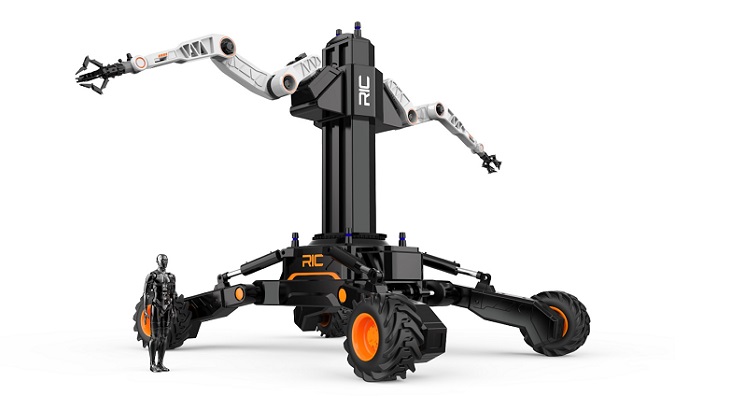Innovation
Zyrex: The 20-Foot Robot Disrupting Construction Sites
RIC Robotics has hailed Zyrex as the world’s first Giantroid.

After using robots to 3D-print a 5,000 sq-ft Walmart store expansion in seven days, RIC Robotics has unveiled its latest innovation: Zyrex—a 20-foot machine built for bigger jobs.
The company has hailed Zyrex as the world’s first “Giantroid,” capable of tackling everything from heavy lifting and welding to detailed carpentry, 3D printing and finishing work.
The robot is battery-powered, features 26 degrees of freedom, and uses an interchangeable tool module, giving it the flexibility to switch tasks quickly.
“We’re not just building another robot – we’re engineering the future of construction,” said Ziyou Xu, founder of RIC Robotics.
Equipped with LiDAR and visual sensors, Zyrex navigates complex environments using vision-language-action (VLA) AI models. This allows it to interpret its surroundings, follow instructions, and adjust to real-time changes on site.
RIC says Zyrex is designed to reduce reliance on human labour and increase safety in hazardous environments.
The company aims to offer Zyrex at under $1 million, with leasing options below $20,000 per month—potentially making advanced automation accessible to mid-sized firms, not just industry giants.
Zyrex’s rollout will happen in two stages. Initially, operators will control the robot via virtual reality and physical simulators while it collects real-time data.
This data will help train the VLA AI for improved task performance and safety. In the second phase, Zyrex will operate fully autonomously.
The robot builds on the success of RIC’s earlier model, RIC-Primus, a 3D construction robot already capable of fast, automated building with a 32-foot reach. Zyrex extends those functions far beyond printing, aiming to be a general-purpose tool for the modern jobsite.
RELATED: AI-Powered Robot Builds House in Just 24 Hours
According to RIC, the robot is being developed to address two of the industry’s biggest challenges: labour shortages and the dangers of high-risk tasks.
With a working prototype expected by early 2026, the company says Zyrex could become a scalable solution for everything from large-scale commercial projects to specialised industrial tasks.
If successful, Zyrex may signal a major shift in how buildings are constructed—replacing manpower not with machines, but with intelligent, multi-skilled robotic collaborators.














